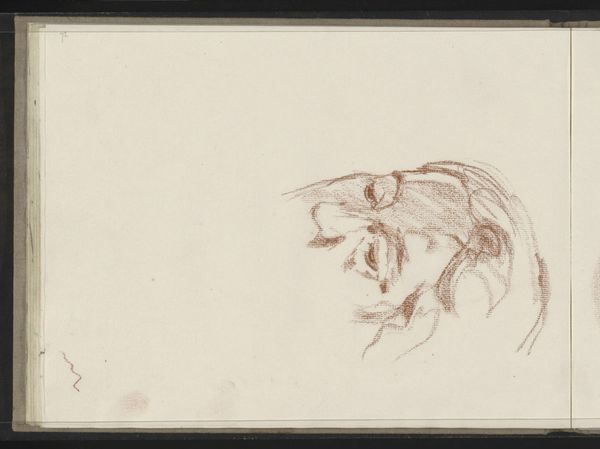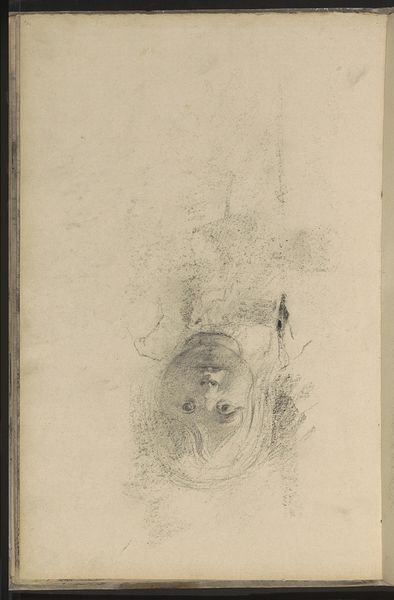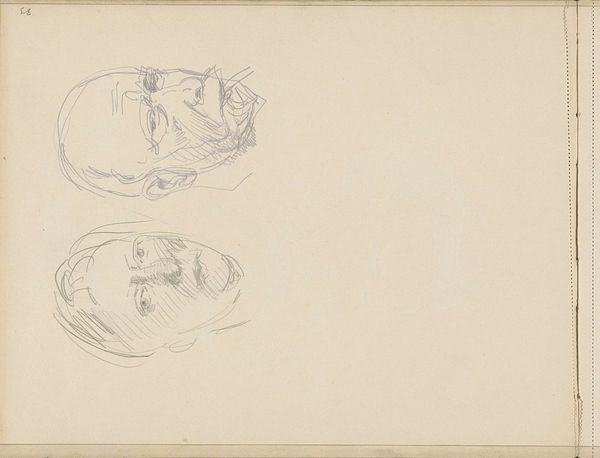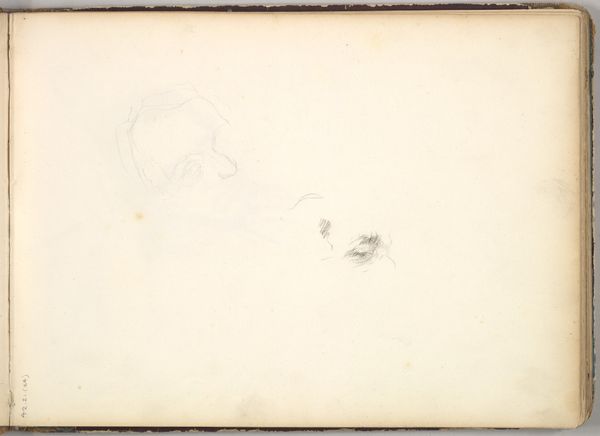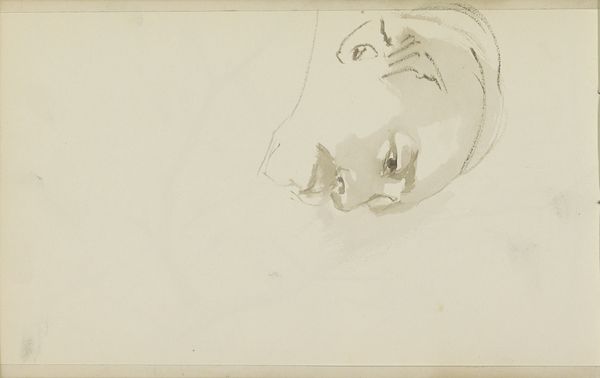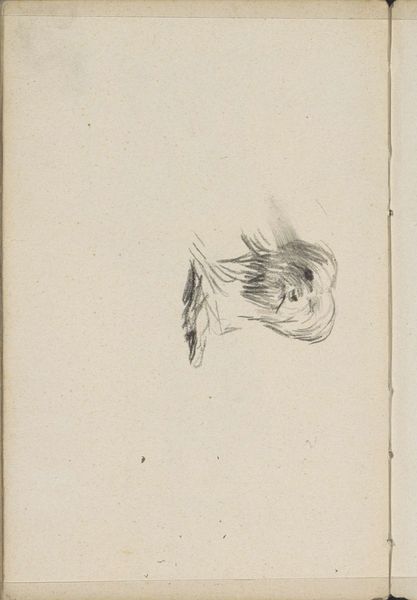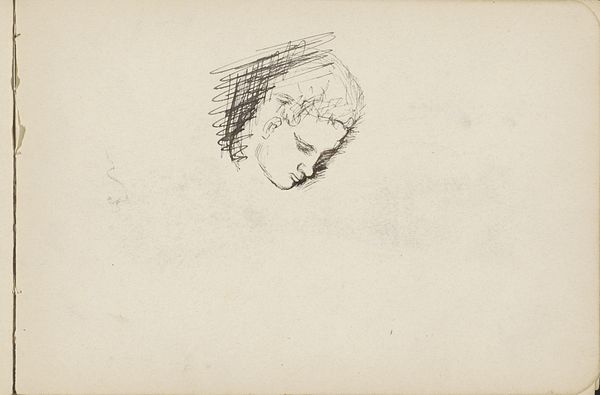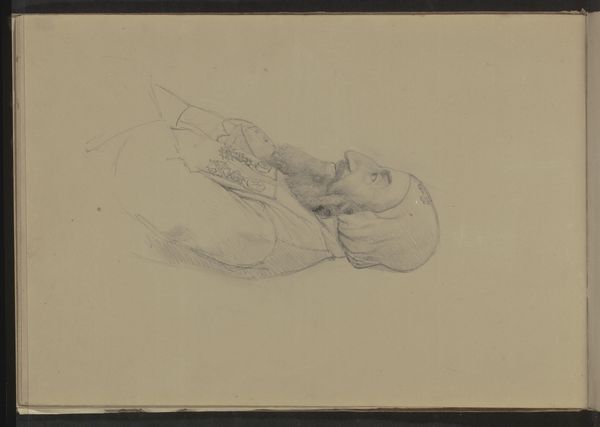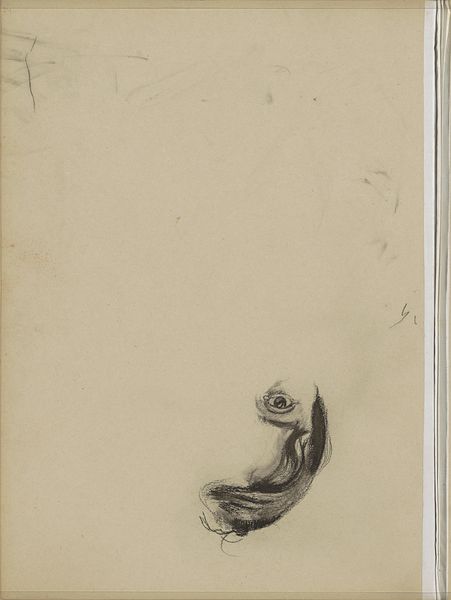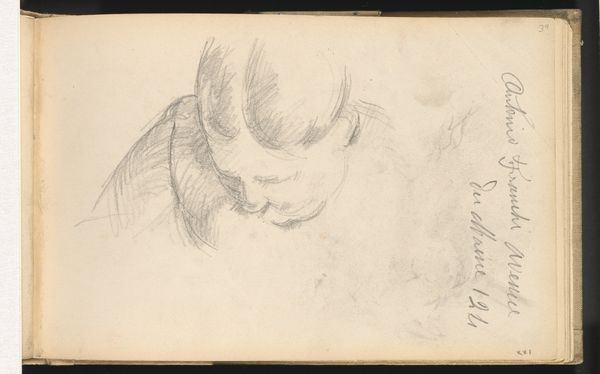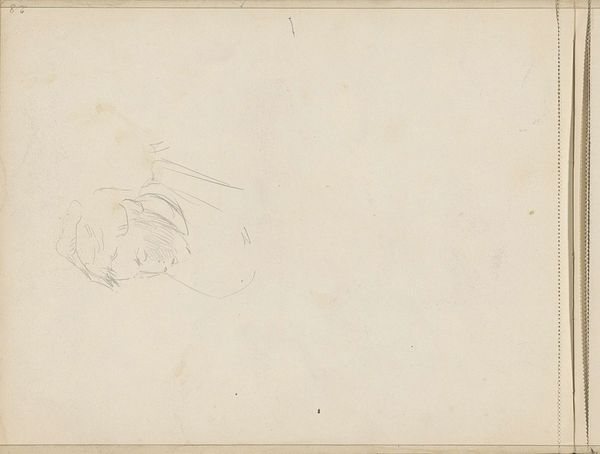
Dimensions: overall: 23.7 x 15.2 cm (9 5/16 x 6 in.)
Copyright: National Gallery of Art: CC0 1.0
Curator: We're looking at Paul Cézanne's "Self-Portrait" from around 1895, executed in pencil. A raw, unvarnished glimpse into the artist’s own gaze. Editor: There's a vulnerability here. The lines are tentative, almost hesitant, yet intensely focused around the eyes. The incompleteness is quite striking. Curator: Indeed. And note the economical use of line. Cézanne builds form not through shading in the traditional sense, but through hatched, parallel strokes. Consider how this might reflect his process of slowly constructing forms in paint, one careful plane at a time. His marks and the whiteness of the page work together. Editor: Exactly! The negative space becomes as important as the marks themselves, it gives the portrait a quality of light and air that belies the medium. I'm fascinated by how he leaves the back of the head unfinished. What implications do you think there might be of what Cézanne might have been going through that pushed him towards only showing the minimum of this man’s identity? Curator: Given his social milieu, drawing with pencil became increasingly popular and accessible, aligning with broader trends in art production and the democratization of tools. These drawings, especially self-portraits, suggest a level of individual exploration readily facilitated by accessible materials. It hints at solitary contemplation and self-examination within the studio setting. It could also be seen as an economy in a period that had little time for such endeavours, thus these drawings may be what the artist could fit between projects or tasks. Editor: I appreciate your connecting it to the socio-economic aspects. From my standpoint, seeing solely the lines themselves, there’s something so honest in its imperfection. This isn't about idealization. Curator: It prompts us to rethink our relationship to art objects, from mere images to markers of creative labour. Editor: I agree. Cézanne gives us just enough visual information to connect, leaving the rest to our interpretation and the gaps tell almost more than the lines. Curator: Indeed, making it, above all, a very potent exercise in material economy. Editor: Precisely. An intimate encounter indeed, reminding us of the power of simplicity and intention.
Comments
No comments
Be the first to comment and join the conversation on the ultimate creative platform.
